Halabja: A 'lost daughter' finds her way home
- Published
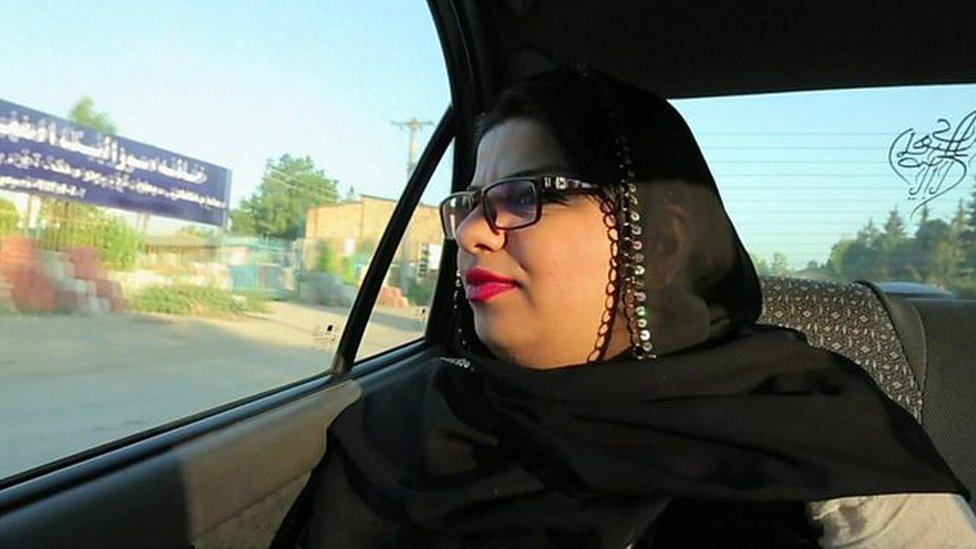
In 1988 Saddam Hussein dropped chemical weapons on his own people - the Kurdish residents of the town of Halabja. Thousands died and in the chaos that followed many families were scattered. One woman, a baby at the time of the attack, was brought up in Iran but recently returned to find out whether any relatives had survived.
"Tonight your destiny will be clear. Everyone in the crowd wants to know who your family is."
Bizarrely, the climax of Maryam Barootchian's search for her parents and siblings is taking place on live television, in front of an audience of millions.
Gathered in the auditorium where the announcement is to be made are four families eager to claim her.
For Maryam's story is bound up with their own - all lost a baby on that day in March 1988 when Saddam Hussein's jets swooped down and dropped a mixture of mustard gas and nerve agents on the rebellious Kurdish community.
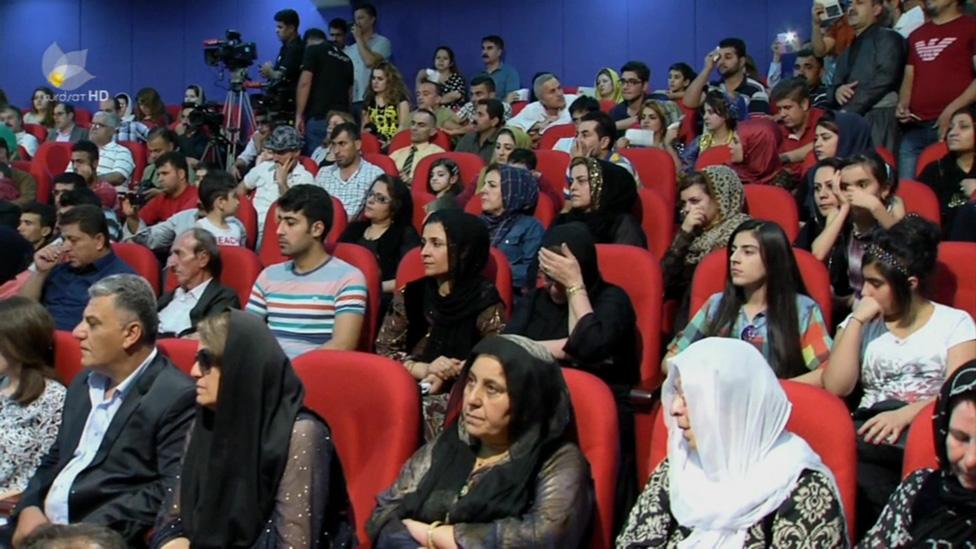
Families wait to find out if Maryam is theirs
Maryam, who is now in her 20s, was a baby at the time. She was evacuated with her family by Iranian troops and taken to Tehran by helicopter, though it would be many years before she found this out. In the process, she was somehow separated from her mother, whose sight had been damaged by the chemicals.
She was then adopted and brought up in the Iranian town of Sari, close to the Caspian Sea, by a family whose 14-year-old daughter had recently died from leukaemia.

Find out more
Jiyar Gol's Our World report The Lost Daughter of Halabja can be seen on the BBC News Channel and BBC World News (click for transmission times). Readers in the UK can watch it after 04:30 GMT on Saturday on the BBC iPlayer.

"One day they called from welfare, they said children are arriving from the war zone. Come and get one," remembers Maryam's adoptive mother, Fatemeh.
It was she who chose the name Maryam, the name of her dead daughter.
"I needed this name, I wanted to bring back her memory," says Fatemeh. The first night the baby slept in her arms, she felt "Maryam was back and alive again".
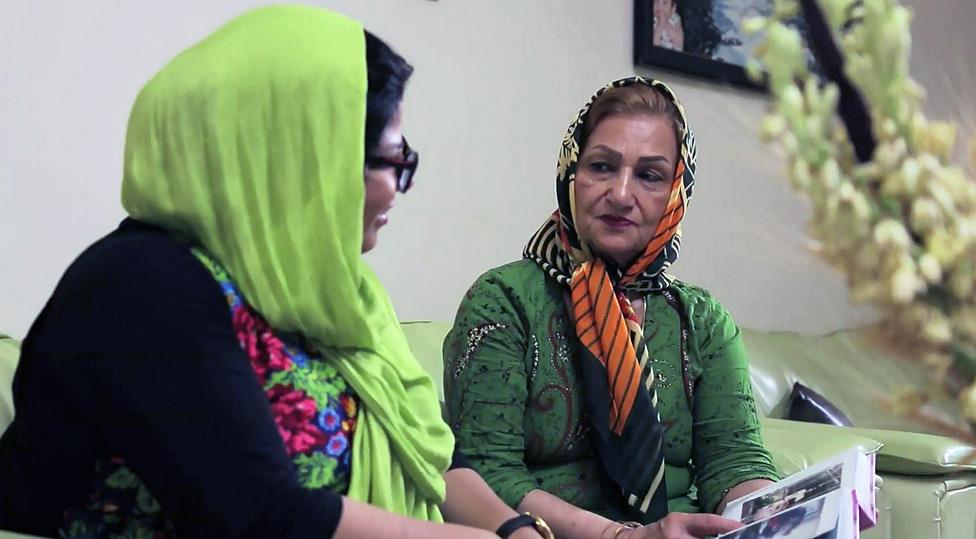
Maryam with her adoptive mother, Fatemeh
But as she grew up, Maryam often felt things were not right.
"One day I was playing with the other children in my relatives' garden. They told me, 'You cannot play with us,'" she says.
"I asked, 'Why?' They said, 'Because you are adopted.' I did not understand what 'being adopted' meant.
"They said, 'It means you are not the child of your parents. If you look at your family album, you will find that you do not look like them.' I went home and looked at my photos. They were right."
Maryam's relationship with her adopted mother hasn't always been easy, but she was extremely close to her father, Hushang.
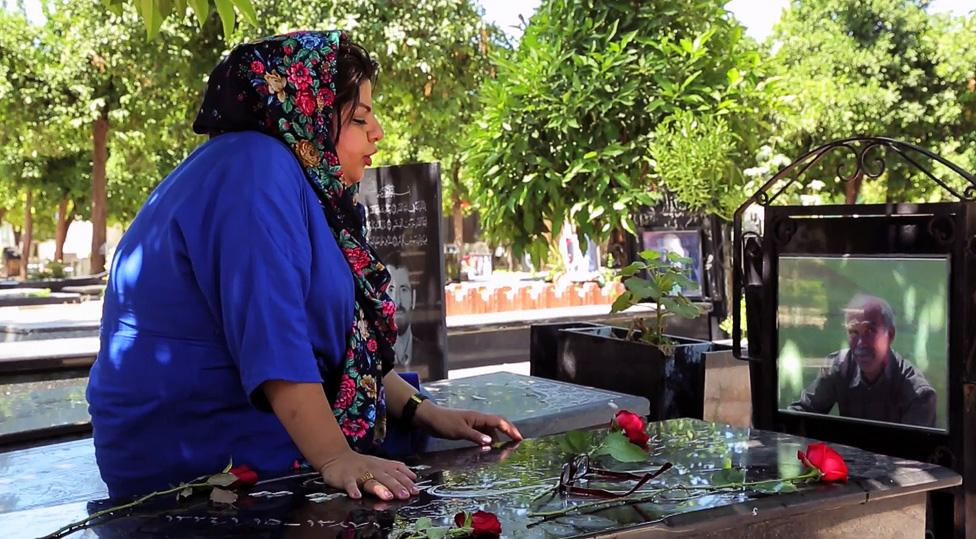
Maryam at her Iranian father's grave
At some point after she turned 18, he confirmed that she had been adopted. He explained that she was Kurdish, although he wasn't sure what region she came from.
Shortly afterwards he died, and again Maryam felt the stigma of not belonging.
"The day my father died, no-one consoled me. I was crying over my father's grave, and they said, 'Why are you crying? You are not his child,'" says Maryam.
"Then I understood that my problems were only beginning. That my misery had just started. I felt so alone that, after two years, I asked my mother to help me find my family."
She travelled to Iranian towns and cities with a large Kurdish population to search for clues, and luckily ran into two Kurdish social workers at Tehran airport. They had connections with the Halabja Chemical Victims Society, which has helped reunite seven "lost children" with their families by matching their DNA.
"I knew I had been born around the same time as the chemical attack on Halabja," says Maryam. "And I thought I might be one of the children from Halabja whose family were killed or displaced."
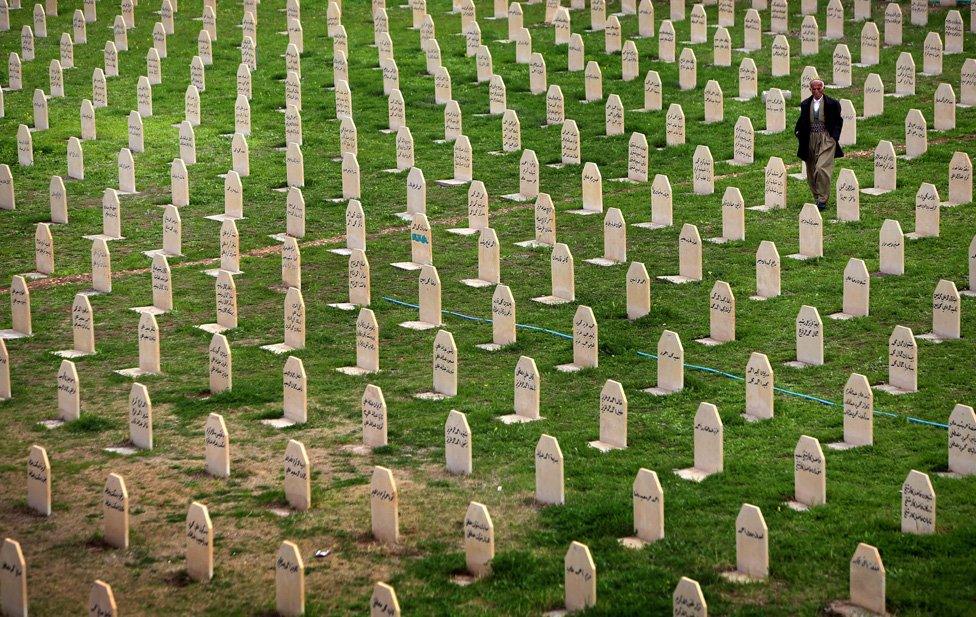
The victims were buried in mass graves and later given separate headstones
Luqman Qadir, the head of group, took up Maryam's case.
"When this catastrophe occurred in Halabja, we were there, we saw what happened - so understanding Maryam's story is easy for us. We saw tens, and even hundreds of children who lost their parents, and were scattered in Iran," he says.
No-one knows the exact number of children who are still missing. Maryam is one of a trickle of "lost children" who are now returning to Halabja, searching for their roots.
"Losing your parents is a disaster for anyone, but it is particularly hard for women, because when they want to get married they will be asked about their background. That is why she was desperate to find out who she is," says Qadir.
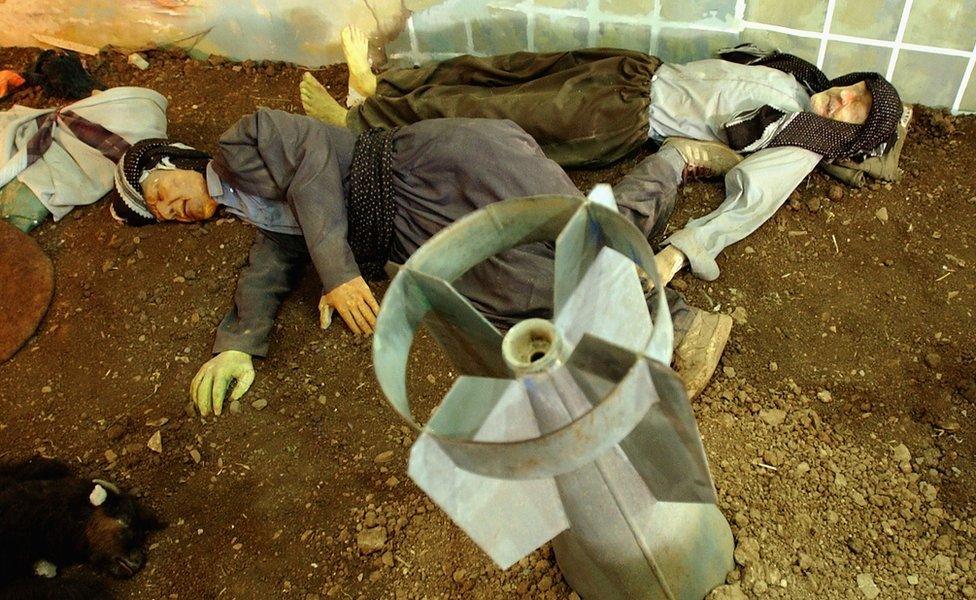
A reconstruction of the attack at the Halabja Peace Monument
Maryam says that back in Iran a possible marriage had been floated but the family put it off when they discovered she had been adopted.
"Repeatedly, as a child, I was told, 'No-one knows who your parents are, you might be illegitimate, you might have been the result of a temporary marriage, or you might have been found in a garbage bin or toilet.' But now I know I am from here I can hold my head high," says Maryam.
When she arrived in Halabja in May to begin the DNA-matching in earnest, she found bereaved families desperate to claim her. Maryam didn't know how old she would have been at the time of the Halabja attack but each of those families had lost lost a baby at the time.
Dr Farhad Bazarnji a specialist in genetic diseases in the nearby Iraqi town of Sulaymaniyah volunteered his services to help Maryam. She appeared on Kurdish TV and appealed for people to come forward for DNA testing. Dr Bazarnji tested 58 families before narrowing it down to just a handful.
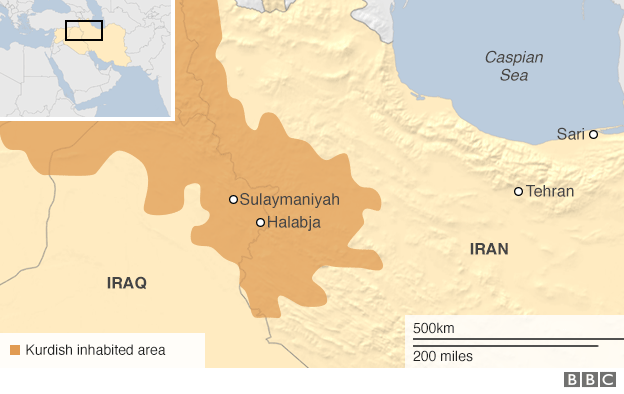
Maryam spent time with the families whose DNA appeared to be close enough to hers to indicate they might be related.
One mother, Meliheh Qurban a women in her 70s, recalled fainting during the chemical attack with her seven-month-old daughter locked in her arms. "I woke up in Kangavar hospital in Iran. I was so confused I didn't even know if I'd had a child or not," she said.
After such a long time, she found it hard to remember her baby's face. Asked if she believed Maryam was her lost daughter, she replied: "I hope so. God willing she is mine. I hope my dream comes true."
For Maryam, the encounter was emotional. She lay in the woman's arms softly crying.
"Having a mother is a great feeling, if she is your real mother," she said. "When I hugged her I wished she was my real mother."
Next she met three sisters whose mother and father died during the attack. Their baby sister was last seen in their mother's arms.
Maryam meets potential sisters
This time Maryam had no doubt.
"They speak like me - very loudly. They laugh exactly like me," she said. "Many of their personal characteristics are like me and now I really believe that they are my family."
The feeling was mutual. "I feel her heart is close to us and I love her," declared Leyla Nasraldin. "Not just that - her appearance, he eyes, her body shape, it's all the same."
In August, the sisters join the assembled guests at the Halabja Peace Monument for the televised climax of Maryam's search. Dr Farhad now has a definite answer.
"Everyone has been waiting for this moment for many months," he says.
Silence.
"Maryam, unfortunately your father is dead, he was one of the victims of the Halabja attack."
Tears stream down Maryam's face.
The moment Maryam embraces her birth mother after 27 years
"But, fortunately I can tell you tonight - Maryam, you have a brother, Maryam, you have a mother, and you will be happy tonight because you are going to meet them. Until today you were known as Maryam, but today I can tell you your name is Hawnaz, and you are the daughter of Mrs Gilas Eskander."
The agonising wait is over. Cheers, screaming and applause erupt from the crowd. An elderly woman wearing dark glasses gets to her feet and is led to Maryam. Gilas repeats her child's birth name, "Hawnaz" and, as she clutches her daughter, she is overcome by emotion, screaming and sobbing.
Gilas Eskander was the last person to come forward for DNA testing in July, and she is a definite match.
"I am so happy. I feel as if I am reborn, as if I am seeing the world through new eyes," she says.

Maryam with her biological mother (left) and adoptive mother
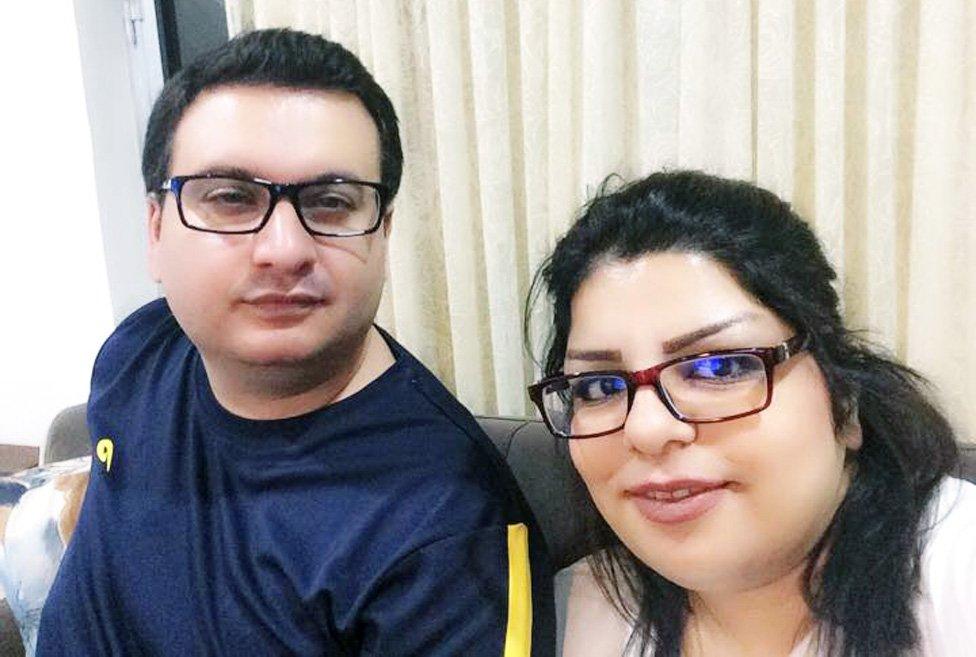
Maryam's brother has come over from the Netherlands to meet her
For the other families, it is a bitter disappointment.
"After three months of psychological turmoil, I am torn apart," one of the sisters declares. "I thought my sister had come back to life. But tonight they have killed her. I really feel I have lost my sister Hannah tonight."
Maryam's birth mother thought her daughter had died in the attack. She remarried and divides her time between Halabja and the Iranian town of Paveh, where she is still receiving treatment for her damaged eyesight.
Maryam has been getting to know her older brother, who has flown over from the Netherlands to meet her, and a half-brother and half-sister. A younger brother has been missing since the 1988 attack.
She has spent the months since Dr Bazarnji's revelation getting to know her extended family in Sulaymaniyah and Irbil. She grew up speaking Farsi, the language of Iran, and is learning Kurdish. She hopes to study in Halabja.
The welcome Maryam has received from so many people will be matched by financial support from the Kurdish regional government, which has vowed to help all the lost children who find their way home.
Jiyar Gol's Our World report The Lost Daughter of Halabja can be seen on the BBC News Channel and BBC World News (click for transmission times). Readers in the UK can watch it after 04:30 GMT on Saturday on the BBC iPlayer.
Subscribe to the BBC News Magazine's email newsletter to get articles sent to your inbox.